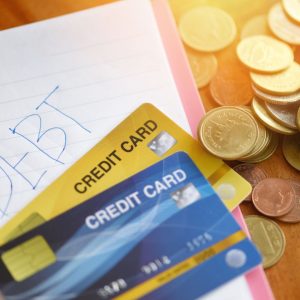An increasing number of Americans are reaching the limits on their credit cards. According to the Federal Reserve, credit card delinquency rates hit a nearly 12-year high.
In the first quarter of 2024, nearly one-fifth of credit card borrowers used at least 90% of their available credit. The New York Fed highlighted the “maxed-out borrowers” issue in a recent report.
Since late 2021, credit card balances and delinquencies have steadily risen, starkly contrasting the historic lows seen during the pandemic’s peak. According to the Fed, delinquencies have now surpassed pre-pandemic levels.
Cardholders who are maxed out are significantly more likely to miss payments. Those who became delinquent in early 2024 had a median utilization rate of 90%, indicating they were nearly at their credit limits.
So, what can you do if you are in debt? Here are some tips to get that debt under control.
Key Takeaways
– Develop a Plan: To address credit card debt effectively, create a plan and adhere to it.
– Prioritize Payments: Focus on paying off cards with the highest interest rates first or those with the smallest balances.
– Pay More Than the Minimum: Paying more than the minimum amount each month reduces the overall interest paid.
Target One Debt at a Time
– Multiple Balances**: If you have balances on multiple credit cards, ensure you always pay at least the minimum on each. Then, concentrate on paying down the total balance on one card at a time.
– High-Interest Debt: Check your statements for interest rates and prioritize paying off the highest-rate debt first.
– Snowball Method: Pay off the card with the smallest balance first. Once it’s fully paid, use the money previously allocated to that card to pay down the next smallest balance.
Pay More Than the Minimum
-Long-Term Savings: Paying only the minimum takes much longer to clear your balance and incurs higher interest costs. Paying more than the minimum saves on interest.
– Statement Guidance: Credit card statements typically show how much you can save by paying more than the minimum.
Quick Tip – Extra Payments: Paying even a little extra each month directly reduces your balance, thus lowering the interest you pay.
Consolidate Debt
– Combine Balances: Consolidating debt merges higher-interest balances into one lower-rate balance, enabling faster debt reduction without increasing payments.
– Balance Transfers: Use low balance transfer rates to move debt from high-interest cards, considering any transfer fees versus potential savings.
– Home Equity: If you have home equity, a line of credit might offer a lower rate to pay down card debt, though closing costs may apply.
– Spending Control: Post-consolidation, it’s crucial to manage spending to prevent accumulating new debt.
Track Your Spending
– Categorize Expenses: Use your credit card statement to categorize monthly spending (e.g., groceries, housing). Identify areas to cut back and apply saved money to debt repayment.
Pay with Cash
– Cash Purchases: Paying with cash or a debit card helps avoid overspending and extra fees, providing clear insight into your finances.
Use Financial Windfalls
– Extra Income: Use raises, bonuses, tax returns, or other financial windfalls for debt reduction rather than increasing your spending. This approach accelerates debt repayment.
 1
1
